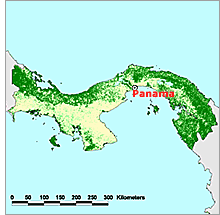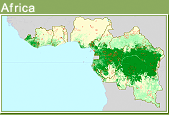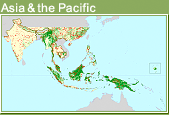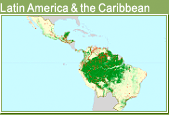Country details
Status of Tropical Forest Management 2005
Latin America & the Caribbean
Panama

©UNEP-WCMC 2004
The management of Panama's PFE is problematic. Concessions have been suspended, and smaller-scale logging is being carried out with little oversight and without detailed management plans or silvicultural prescriptions. The timber industry is in a poor state, with antiquated equipment and an under-supply of legally produced timber. Large areas of forest are classified as protected areas; nevertheless, they are generally not managed or controlled effectively. Forest plantations are being developed, mainly on private properties. Forest management appears strongest in the watershed of the Panama Canal.
Key points
- The PFE comprises an estimated 350,000 hectares of natural production forest and 1.58 million hectares of protection forest. A further 1.60 million hectares of forest have not yet been allocated.
- No production PFE is considered to be under sustainable management. The estimated area of protection PFE under SFM is estimated to be at least 180,000 hectares, comprising the core protection area of the Panama Canal.
- The forest law recognizes the rights of indigenous communities to manage forests in indigenous reserves (called comarcas).
- ANAM has insufficient human and financial resources to carry out the field-level monitoring and control of forestry operations necessary to ensure adherence to forest-related laws and regulations.
- The private sector and civil society have been minimally involved in the preparation of SFM policies and strategies.
- There is a lack of information on the silviculture of the country's natural forests and an apparent lack of research and training capacity.
- Most of the protected areas and protection forests are not well delimited and are threatened by encroachment.
- Illegal logging is widespread in the moist forest area, even in protected areas. This is a significant impediment to long-term SFM.

 Africa
Africa  Asia & the Pacific
Asia & the Pacific  Latin America & the Caribbean
Latin America & the Caribbean